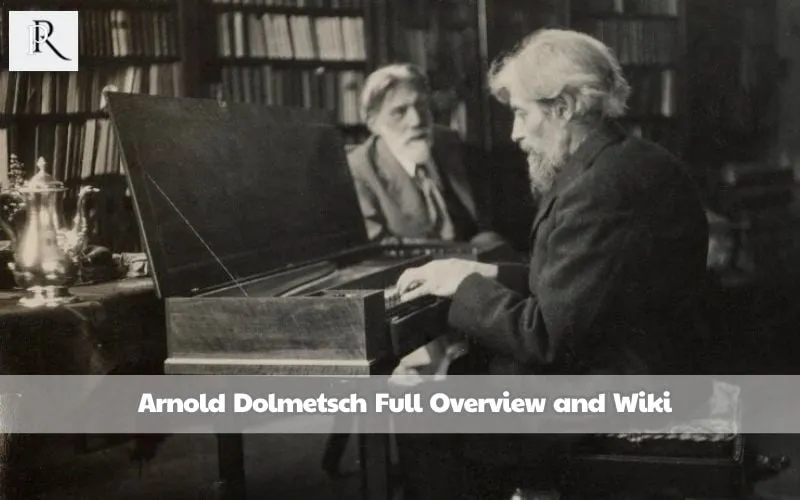Arnold Dolmetsch, a pioneer in the revival of early musical instruments, left not only a cultural mark but also a fascinating financial legacy. In this article, Da Nang Polytechnic will explore Arnold Dolmetsch net worth and the impact of his work.
Quick information
| TRUTH | DETAIL |
| Real name | Eugène Arnold Dolmetsch |
| Popular name | Arnold Dolmetsch |
| Sex | male |
| Date of birth | February 24, 1858 |
| Year old | Died February 28, 1940 (82 years old) |
| Parents | Rudolph Arnold Dolmetsch, Marie Zélie Dolmetsch |
| Siblings | do not apply |
| Place of birth | Le Mans, France |
| Nationality | Born in France, active in England |
| Nation | bohemian origin |
| Education | Royal College of Music, Koninklijk Conservatory Brussels |
| Marital status | Married three times |
| Sexual orientation | Straight |
| Wife/Wife/husband | Marie Morel ( m. 1878; div. 1898) Elodie Désirée ( m. 1899; div. 1903) Mabel Johnston ( m. 1903) |
| Children | Cécile Dolmetsch, Nathalie Dolmetsch, Carl Dolmetsch, Rudolph Dolmetsch |
| Dating | do not apply |
| Net value | do not apply |
| Origin of wealth | Making musical instruments, Performing music, Teaching |
| Height | do not apply |
What is Arnold Dolmetsch’s net worth 2024?

While Arnold Dolmetsch died in 1940, an assessment of his current net worth is not directly possible.
However, through his innovative contributions to the musical instrument industry and the revival of early music, his figurative ‘net worth’ in cultural terms remains substantial.
If we compare him to modern music entrepreneurs like Daniel Barenboim or Yo-Yo Ma, who combine performance with educational and commercial ventures, Dolmetsch’s impact is similarly multidimensional .
Although not financially wealthy, his legacy is rich, influencing countless musicians and instrument makers worldwide.
Arnold Dolmetsch Full Overview and Wiki

Early life and musical beginnings
Arnold Dolmetsch’s journey into the world of music and instrument making began in Le Mans, France, where he was born into a family of piano makers.
This environment was his first workshop, where he learned the craft that would define his career.
His formal education at Brussels Conservatory and Royal College of Music in London under the tutelage of renowned teachers such as Henri Vieuxtemps and Henry Holmes, paved the way for him not only as a musician but also as an educator and innovator.
The spark of early music revival
The turning point in Dolmetsch’s career came when he came across a collection of historical musical instruments at British Museum.
Inspired by the past, he built his first lute in 1893, marking the beginning of his lifelong dedication to reviving early musical instruments.
His efforts were bolstered by encouragement from figures such as William Morrisleading to his first harpsichord and growing fame.
International influence and contribution
Dolmetsch’s work took him across the Atlantic to Chickering in Boston and Gaveau in Paris, where he further honed his skills.
His tenure in the United States also included a collaboration with Belle Skinner, helping to restore rare musical instruments, which later formed a core collection at the Yale Musical Instrument Collection.
Establishing a legacy in Haslemere
Eventually settling in Haslemere, Surrey, Dolmetsch established a musical instrument workshop that produced replicas of almost every type of historical instrument from the 15th to the 18th centuries.
His influence was not limited to musical instrument making; he is the author Interpretation of music of the 17th and 18th centuriesadvocates authentic performance methods that reshape modern interpretations of early music.
Cultural impact and recognition
His contributions to the world of music earned him an award British civilian List pensions and title of Knight of the Légion d’honneur from the French government.
He founded it International Dolmetsch Early Music Festivalcontinued to be an important event in early music.
Family and personal life
He was married three times: first Marie Morel in 1878, whom he divorced in 1898; Later Elodie Desirée 1899, ending in 1903; and finally Mabel Johnstona former student, same year.
He had many children who also made significant contributions to music, including Cécile, Nathalie, Carl and Rudolph Dolmetsch.
Impact on future generations
Dolmetsch’s death in 1940 marked the end of an era but the beginning of a legacy that would influence musicians and instrument makers for generations.
His dedication to early music and its instruments brought widespread appreciation and revival to music that would otherwise have been lost to time.
Social media accounts
Instagram: Not applicable
Twitter: Not applicable
Facebook: Not applicable
All about Arnold Dolmetsch Latest News 2024
There is no information about him in 2024 due to his death.
Frequently asked questions about Arnold Dolmetsch

Who is Arnold Dolmetsch?
He was a French-born musician and instrument maker who played a key role in the musical revival of the early 20th century, particularly through his use of musical instruments and his practice of period performance. history.
When and where was he born?
He was born on February 24, 1858 in Le Mans, France.
Does Dolmetsch have children?
Dolmetsch is most celebrated for his efforts to revive the production and performance of early musical instruments such as the harpsichord, clavichord, and viol, as well as for his influence on performance practices. informed in history.
What important movements were you associated with?
He was significantly influenced by the Arts and Crafts Movement, which emphasized craftsmanship and was a reaction against industrialization. This movement profoundly shaped his approach to instrument making and musical performance.
Does he have any notable connections or influences?
Yes, he was influenced by key figures such as William Morris and Bernard Shaw, and he was actively involved in the Art Workers’ Union. His career and philosophical approach to music and crafts were consistent with the ideals of the Arts and Crafts Movement.
Where did he settle and establish his business?
Although born in France, he spent most of his working life in England, where he established his workshop in Haslemere, Surrey.
What are some of Dolmetsch’s notable works or publications?
He is the author of essential texts on historical activity, incl Interpretation of music from the 17th and 18th centuriesremains an important work in the field of music.
When did Arnold Dolmetsch die and what is his legacy?
He died on February 28, 1940 in Haslemere, England. His legacy includes the Dolmetsch Foundation, which continues to promote early music and the use of historic musical instruments.
What awards or honors has Arnold Dolmetsch received?
Dolmetsch was made Chevalier de la Légion d’honneur in 1938, recognizing his contributions to music and culture.
What is the Dolmetsch Foundation and what does it do?
The Dolmetsch Foundation was established to support Dolmetsch’s work and continue to promote the making and playing of early musical instruments, upholding the traditions and ideals for which he championed throughout his life.
Conclusion
Arnold Dolmetsch remains a towering figure in the world of music, celebrated for his ingenuity, his educational contributions, and the lasting impact of his revival of early musical traditions. His life and work continue to inspire those working in the fields of cultural heritage and music, preserving the treasures of musical history for future generations.
Categories: Musician
Source: dut.edu.vn





